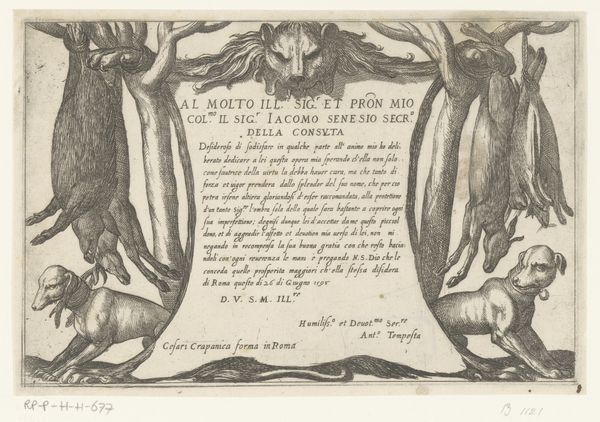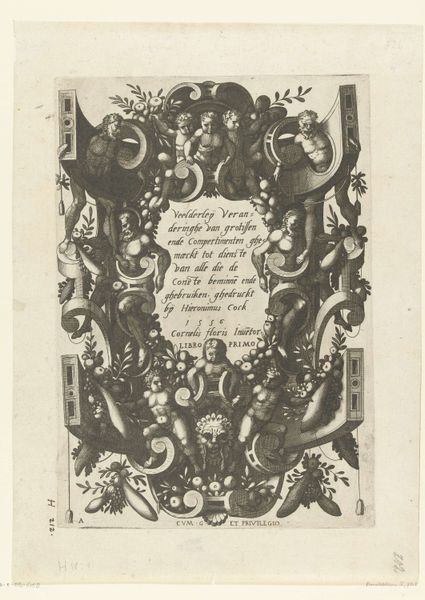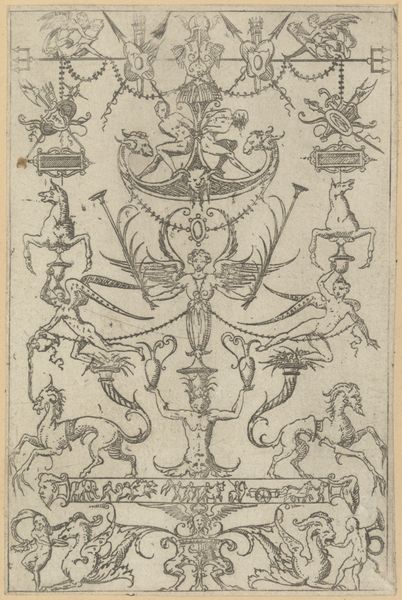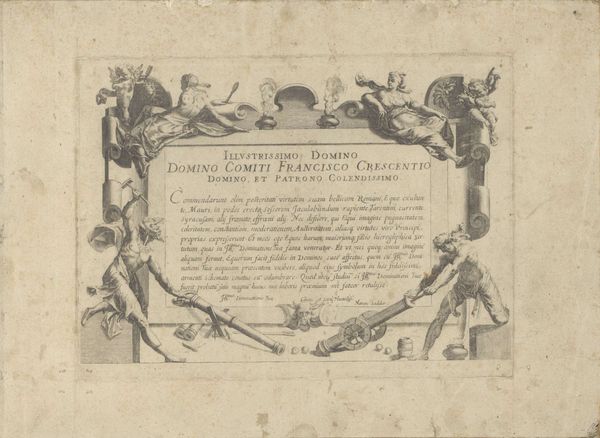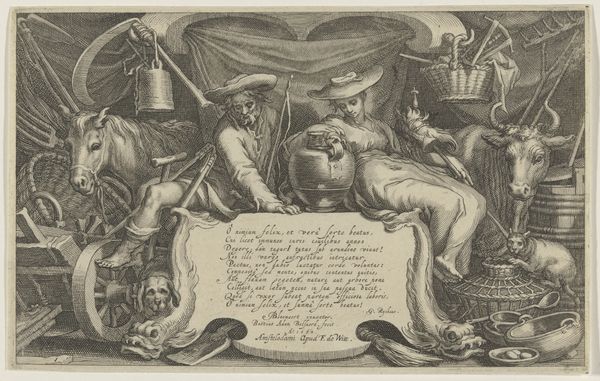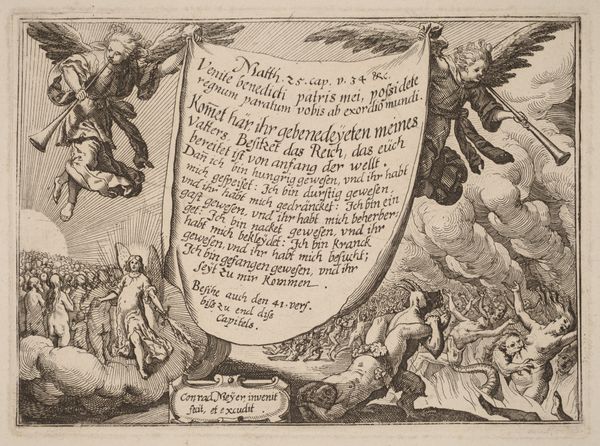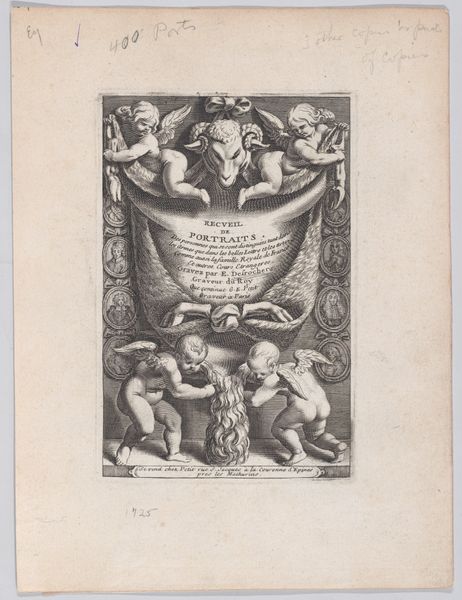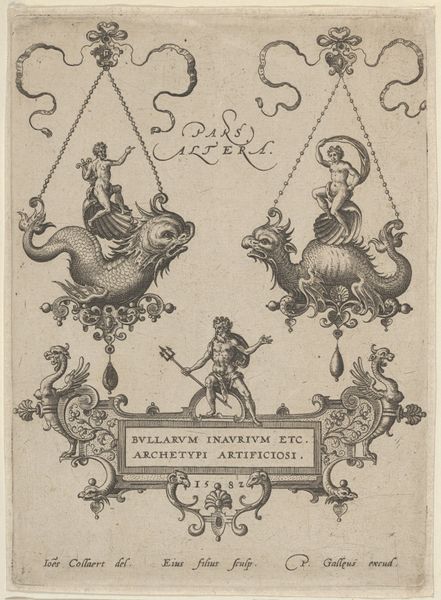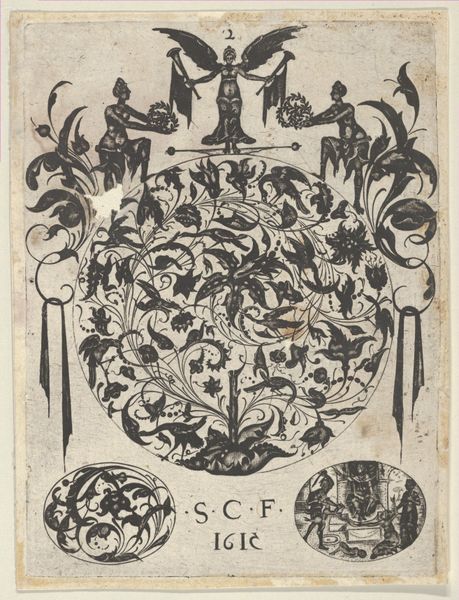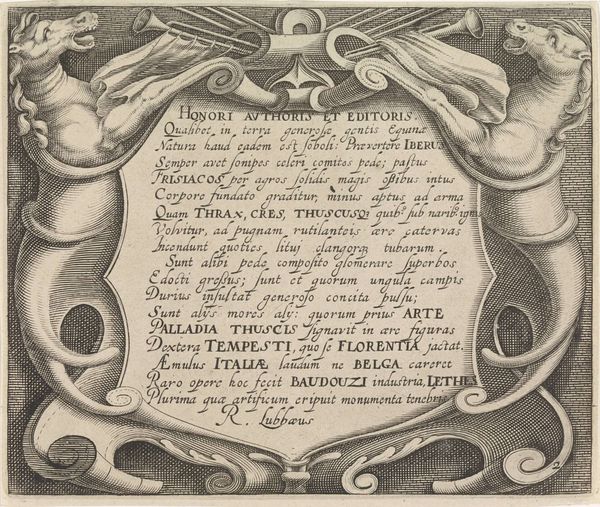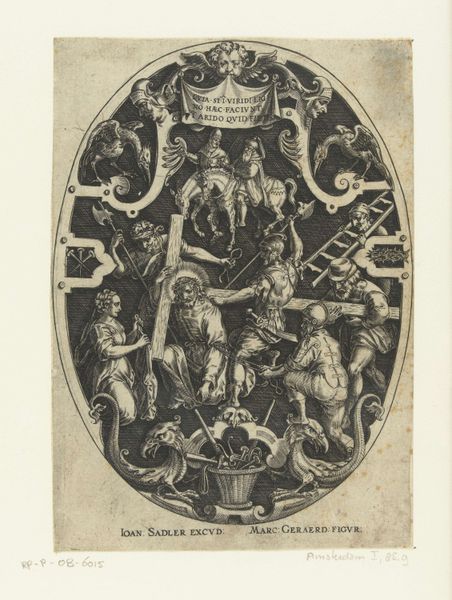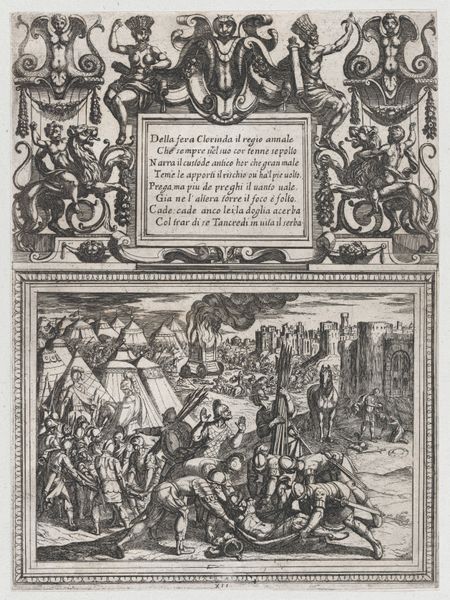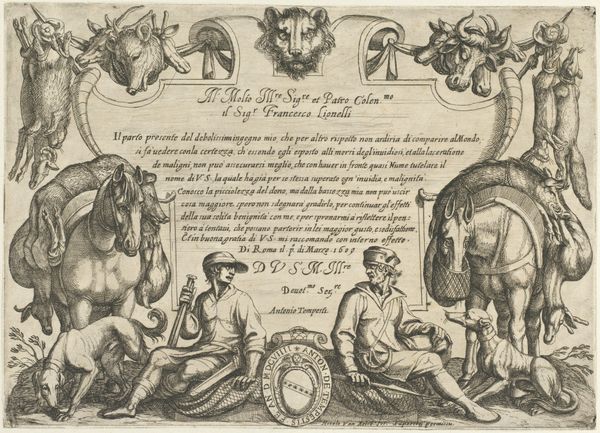
Title Plate from Veelderleij niewe inventien van antijckesche sepultueren diemen nou zeere ghebruijkende is met noch zeer fraeije grotissen en compertimenten zeer beqwame voer beeltsniders antijcksniders schilders en all constenaers...Libro Secundo 1557
0:00
0:00
drawing, print, engraving
#
drawing
#
pen drawing
# print
#
figuration
#
11_renaissance
#
line
#
northern-renaissance
#
engraving
Dimensions: Sheet: 11 13/16 x 8 1/4 in. (30 x 21 cm)
Copyright: Public Domain
Curator: Looking at this dense and theatrical engraving, it feels like we’re peering into a fever dream. Editor: Indeed. What we have here is the title plate from "Veelderleij niewe inventien van antijckesche sepultueren," created by Johannes van Doetecum I in 1557. It’s a beautiful example of Northern Renaissance printmaking, currently residing at the Metropolitan Museum. The piece, as you see, incorporates both engraving and drawing. Curator: The frame teems with grotesques—satyr-like figures, human busts morphing into foliage... It's a world where the organic and the monstrous collide. I’m struck by the figures carrying the fruits or possibly heads, a suggestion of life’s bounty and imminent mortality. Editor: The ornamental framework that encloses the inscription indicates the culture of the period. These “new inventions of antique sepulchers” were presented as inspiration for sculptors, painters, and artists, but what does that indicate in relation to the socio-political factors of the era? It signals the revival of classical forms, doesn’t it, filtered through the lens of the Northern Renaissance, eager to incorporate Italianate styles into their work and assert their own creative prowess. Curator: Absolutely. And even within this drive to classical forms, the grotesques remain as reminders of folk traditions that endure beneath that surface of the classics. These are, after all, designs meant to memorialize the dead, thus why this piece employs a lot of heavy, evocative symbols about mortality. I mean, observe the figures—part human, part animal, emblems of transformation. Editor: I’d agree, a complex interplay of tradition and innovation. The printing press allowed to artists share ideas in unprecedented ways. Books of design such as this were quite popular during the Renaissance for wide artistic production. These works made the production, dissemination, and reception of images increasingly accessible to ever-widening groups of society. Curator: The print definitely invites reflection on cycles of creativity. The visual style, while appearing as rather decorative in form, has multiple messages. It encourages me to appreciate how the very symbols surrounding our perception of mortality continues to echo through history, transforming and enduring across different creative processes. Editor: A worthy final point to meditate on the ways death and the artistic interpretations it garners. I wonder about its continuous effect on creative freedom during different periods.
Comments
No comments
Be the first to comment and join the conversation on the ultimate creative platform.
